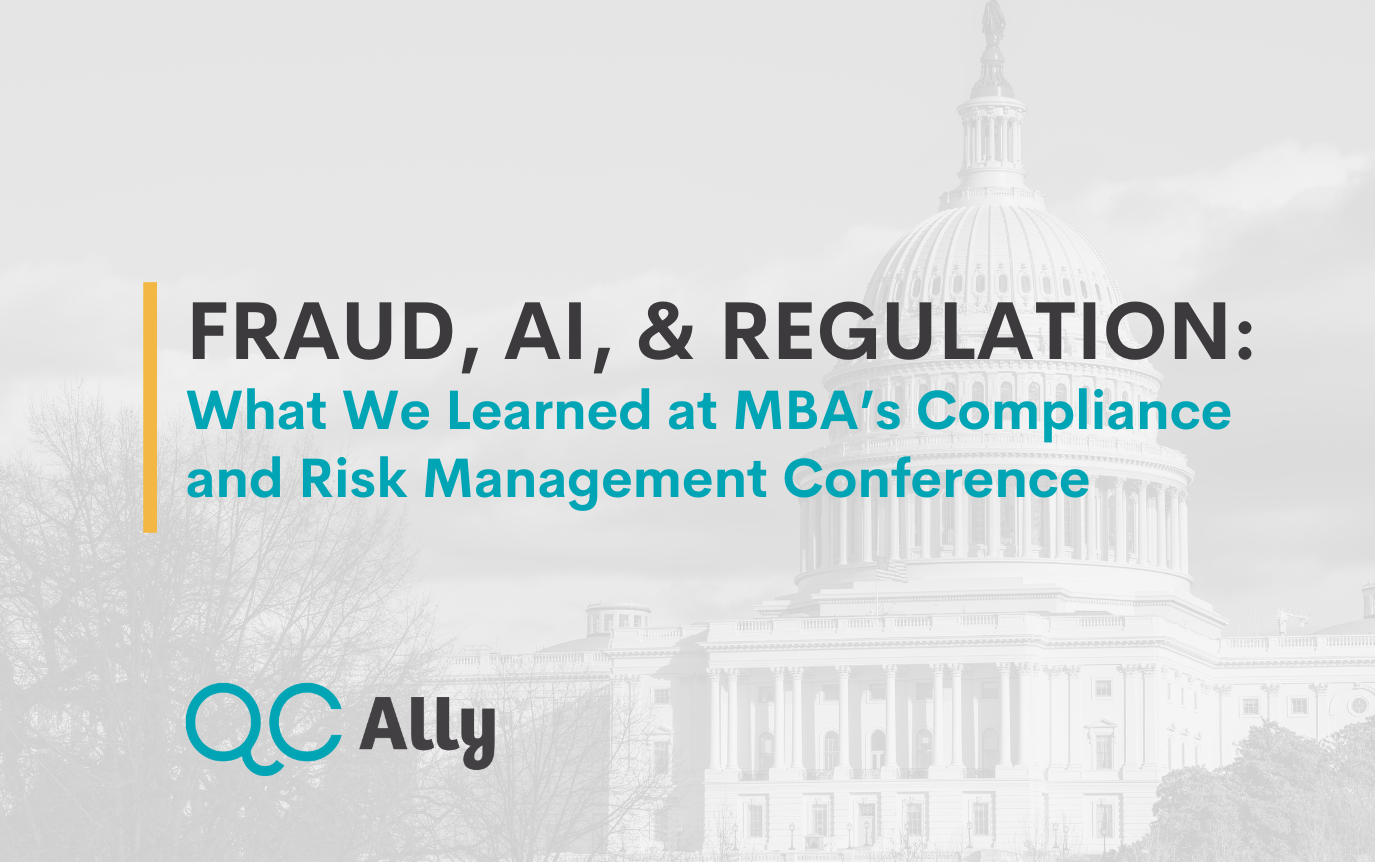Fraud, AI, and Regulation: What We Learned at MBA’s Compliance and Risk Management Conference
By: Jeffrey Flory, CEO of QC Ally
The 2025 MBA Compliance and Risk Management Conference was packed with insights, debates, and a few reality checks for anyone working in mortgage lending. Across sessions with regulators, GSEs, tech experts, and industry leaders, a handful of themes kept popping up. Here are the five big takeaways that stood out, and why they matter for the year ahead.
1: Non-Agency Lending is Growing and So Are the Risks
Non-agency products (think non-QM, DSCR, foreign national loans, and HELOCs) are seeing huge investor demand. But with that growth comes a wave of new risks. Fraud trends like occupancy misrepresentation, straw buyers, and shady LLC borrowers are keeping compliance teams on high alert. Technology, including AI, can help flag suspicious files, but the message was clear: human oversight is still key. Lenders should double down on quality control, training, and digging into details that don’t add up.
2: Advocacy Matters More Than Ever
Another strong theme throughout the conference: if the industry doesn’t speak up, lawmakers will write the rules without us. MBA’s political action committee (MORPAC) reminded attendees of recent wins like VA home loan program enhancements and reining in trigger leads. But not all battles are won. Part of the Road to Housing Act raised concern for its vague language, potentially increasing lender liability. Between GSE reprivatization discussions, Basel III capital requirements, and credit bureau merge debates, informing lawmakers on our industry issues directly will be critical.
3: Fannie and Freddie Continue to Focus on Loan Quality
The message from the GSEs is clear: loan quality is not optional. Occupancy misrepresentation and income-related mistakes remain top defect drivers, and bothagencies are piloting AI and machine learning to catch issues earlier. Another big focus right now is on re-verification. That is, double-checking employment, income, occupancy, and appraisal details to make sure nothing has changed between origination and closing. The latest guideline updates expand these requirements but also give lenders more flexibility to use different vendors or methods as long as the checks get done.
For lenders, that means reverification is shifting from a back-office formality to a frontline safeguard. You must tighten up sampling policies, strengthen occupancy and income verification, and make re-verification a more intentional part of QC. Tools like templates, mail merges, and better reporting can help streamline the process.
4: Generative AI: Big Potential, Big Risks
AI continues to be a hot topic with excitement about generative AI and how it can streamline operations, write documents, and even power autonomous agents in the mortgage process. But there’s also fear. AI-driven fraud, synthetic identities, data privacy issues, and bias all pose real threats. Regulators are already moving with states like Colorado introducing new AI law to allow consumers to opt out of AI-driven decisions. The consensus in the room? AI should support human experts, not replace them, and every lender needs to track and govern its AI tools carefully.
5: Credit Scoring and Insurance Costs are Shaking Things Up
A quieter, but hugely important, theme was credit models and insurance. FHFA has approved VantageScore 4.0 and FICO 10T, but lenders are still waiting on clarity around adoption timelines. At the same time, talk of shifting from tri-merge to bi-merge or single-bureau reports could save time and money. And then there’s homeowners’ insurance. With costs skyrocketing, especially in high-risk states, closings and affordability are being impacted. While these issues may not be making the top headlines, they could directly hit borrowers and lenders in the years ahead.
From fraud prevention to AI regulation, credit scoring to legislative advocacy, the conference demonstrated just how fast compliance and risk are evolving. Staying ahead isn’t just about keeping up with new rules. It’s also about being proactive, adaptable, and ready to pivot when the unexpected happens. Want to learn more? Contact us:


